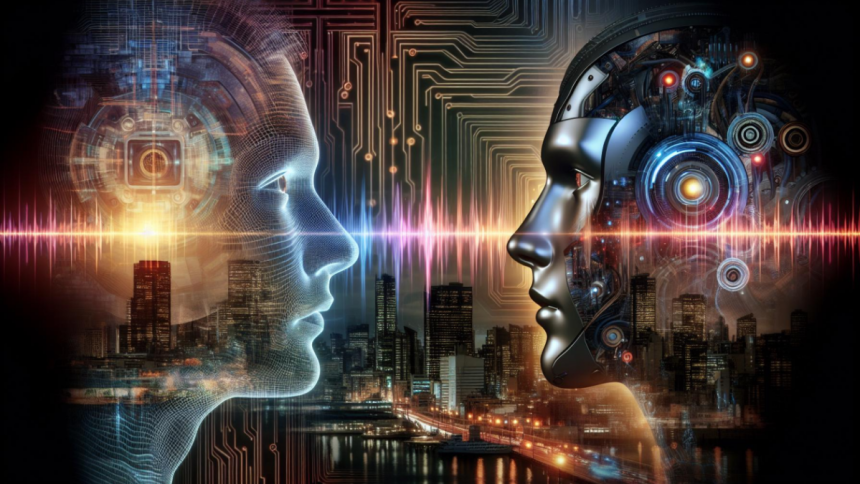Voice cloning is one of the most fascinating and rapidly evolving technologies today, enabling machines to replicate human voices with striking accuracy. This technology has the potential to transform industries, reshape communication, and raise new ethical questions. From entertainment and marketing to accessibility and security, the ability to clone voices is opening up endless possibilities. In this article, we will dive into the mechanics of voice cloning, its real-world applications, and the challenges it presents.
What is Voice Cloning?
Voice cloning is the process of creating a synthetic replica of a human voice using advanced machine-learning algorithms and audio data. By analyzing a person’s speech patterns, pitch, tone, and vocal nuances, voice cloning technology can generate a digital model of that voice. Once created, the clone can be used to generate new speech in the person’s voice, even if they never uttered those specific words.
While this may sound like the stuff of science fiction, the technology behind voice cloning is based on developments in neural networks and deep learning. These models can mimic the complexity of human speech by training on vast datasets of recorded voices. As the technology advances, the quality and realism of the cloned voices improve, allowing for nearly indistinguishable replicas.
How Does Voice Cloning Work?
Voice cloning technology is powered by deep learning models, particularly those that focus on speech synthesis and natural language processing (NLP). The process typically starts with gathering a significant amount of audio data from the target voice, which can range from just a few minutes to several hours, depending on the quality and accuracy desired.
Once the audio is collected, the voice cloning system analyzes it, breaking down the various components of speech—such as phonetics, pitch, and tempo. This analysis enables the system to learn the vocal characteristics of the individual and create a unique “voiceprint.”
The next step is generating new speech based on this voiceprint. By feeding text into the model, it can produce spoken words in the cloned voice. The more data the system has, the more natural and accurate the synthesized speech will sound. This process allows for high levels of customization, from adjusting the tone to replicating specific emotions in the cloned voice.
Real-world applications of Voice Cloning
The rise of voice cloning technology is having a profound impact on multiple industries, creating new opportunities for innovation and enhancing the way we communicate. Below are some of the most significant areas where voice cloning is making its mark:
1. Entertainment and Media
Voice cloning is already revolutionizing the entertainment industry, particularly in film, television, and video games. Imagine a scenario where an actor can “lend” their voice to a character without ever stepping into a recording studio. This not only saves time and resources but also allows for greater creative flexibility. For instance, voice actors could continue to “perform” in roles long after their physical presence is no longer possible.
Moreover, voice cloning offers exciting possibilities for dubbing and localization in movies and TV shows. Instead of relying on voice actors who may struggle to capture the original tone and inflection, AI-generated voices can replicate the sound of the original actor, ensuring consistency across different languages.
2. Assistive Technology and Accessibility
Voice cloning has the potential to significantly enhance accessibility tools, especially for individuals with speech impairments. By using AI voice cloning, people who have lost their ability to speak due to illness or injury can regain their voices. These synthetic voices can be trained to match the person’s original voice, allowing them to communicate in a way that feels more personal and natural.
In addition to helping those with speech disabilities, voice cloning could also be used to create more interactive and engaging assistive devices, such as voice-activated systems or personalized virtual assistants.
3. Customer Service and Marketing
Businesses are always seeking ways to provide more personalized and efficient customer experiences, and voice cloning offers a powerful tool for this. Imagine a customer service hotline where the voice is not a generic robotic tone but a familiar, branded voice that aligns with the company’s identity. Companies could create unique, recognizable voices that represent their brand and help build customer loyalty.
In marketing, voice cloning allows for hyper-targeted audio ads that feel more personal and engaging. For example, advertisers could use the voice of a popular celebrity or influencer to promote products without requiring the actual person to record each advertisement, offering a more scalable solution.
Voice Cloning and AI: A Powerful Combination
As voice cloning technology advances, AI plays an essential role in shaping its capabilities. AI voice cloning tools have become more sophisticated, enabling developers to create highly realistic voice replicas with minimal data. This shift is making it easier for companies and individuals to leverage voice cloning for various applications, from entertainment to personal use.
Moreover, voice cloning has evolved to the point where it can generate emotional nuances, capturing the subtle shifts in tone that give human speech its emotional depth. This ability to clone not just the sound of a voice but its emotional context is making AI-generated voices more believable and relatable.
For example, with the help of an AI voice cloning tool, users can generate realistic voices for podcasts, audiobooks, or even interactive gaming experiences. As this technology becomes more accessible, it’s expected to play a pivotal role in shaping how we engage with digital content.
Challenges and Ethical Considerations
Despite the many benefits of voice cloning, the technology is not without its challenges. One of the most pressing concerns is the potential for misuse. Voice cloning can be used to impersonate individuals, potentially leading to identity theft, fraud, or misinformation. This is particularly alarming in the context of deepfakes, where cloned voices could be combined with manipulated video to create convincing fake recordings of public figures or private individuals.
Another ethical concern is the potential loss of control over one’s voice. As voice cloning becomes more advanced, questions arise about intellectual property and consent. Can someone’s voice be cloned without their permission? Should individuals be compensated for the use of their voice in AI-generated content?
To address these concerns, there is a growing call for regulatory frameworks and industry guidelines that ensure the ethical use of voice cloning technology. Some companies are already taking steps to develop security measures, such as watermarking cloned voices to distinguish them from real ones.
The Future of Voice Cloning
As the technology continues to evolve, the future of voice cloning looks promising yet complex. From making digital content more engaging to improving assistive technologies, the potential applications of voice cloning are vast. However, the technology’s success will depend on finding a balance between innovation and ethical responsibility.
As we move forward, it’s essential to explore how to clone a voice responsibly, ensuring that the benefits of this technology are harnessed while minimizing risks. With the right safeguards in place, voice cloning can become a powerful tool for enhancing human communication, creativity, and accessibility.
In conclusion, the rise of voice cloning is shaping the way we interact with sound, offering exciting possibilities across various fields. Whether in entertainment, marketing, or assistive technology, the ability to replicate human voices with precision and emotion is changing how we engage with digital content.
Lynn Martelli is an editor at Readability. She received her MFA in Creative Writing from Antioch University and has worked as an editor for over 10 years. Lynn has edited a wide variety of books, including fiction, non-fiction, memoirs, and more. In her free time, Lynn enjoys reading, writing, and spending time with her family and friends.















